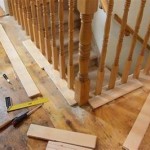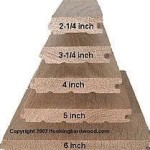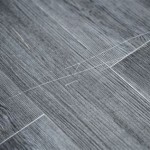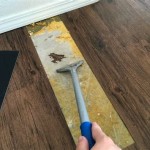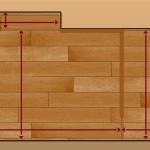Can You Burn Wood Flooring in a Fireplace? Addressing the Safety and Practicality
Burning wood flooring in a fireplace might seem like a convenient way to dispose of unwanted material or supplement your fuel source. However, this practice is fraught with potential dangers and practical concerns that warrant careful consideration. While wood fundamentally serves as the primary fuel source for fireplaces, the specific characteristics of wood flooring, including its composition, treatment, and potential contaminants, distinguish it significantly from firewood and necessitate a cautious approach.
Before considering the feasibility of burning wood flooring, it is crucial to understand the differences between engineered and solid wood planks. Solid wood flooring, as the name suggests, is constructed from a single piece of lumber. Conversely, engineered wood flooring comprises multiple layers of wood veneer bonded together, often with a core of plywood or high-density fiberboard (HDF). The construction and materials used in these different types of flooring heavily influence their suitability for burning.
Furthermore, the finishes and treatments applied to wood flooring introduce another layer of complexity. Polyurethane, varnish, stain, and other coatings are commonly used to enhance the appearance and durability of the flooring. These substances release potentially harmful fumes when burned, posing health risks and potentially damaging the fireplace or chimney.
Understanding the Risks Associated with Burning Wood Flooring
The primary concerns surrounding the burning of wood flooring in a fireplace revolve around safety and potential environmental and health impacts. The composition of many types of wood flooring, particularly engineered varieties, and the presence of various chemical treatments significantly increase the risks associated with this practice. These risks can manifest in several ways, affecting both the indoor environment and the structural integrity of the fireplace and chimney.
One of the most significant dangers is the release of toxic fumes. Many wood flooring products contain adhesives, coatings, and preservatives that emit harmful chemicals when burned. These chemicals can include formaldehyde, volatile organic compounds (VOCs), and other hazardous substances. Inhaling these fumes can cause respiratory irritation, headaches, nausea, and, in some cases, more severe health problems, especially for individuals with pre-existing respiratory conditions or sensitivities.
Moreover, the burning of treated wood flooring can contribute to creosote buildup in the chimney. Creosote is a highly flammable substance that accumulates as a result of incomplete combustion. When wood flooring is burned, the chemicals and resins present in the wood accelerate the formation of creosote. Excessive creosote buildup significantly increases the risk of chimney fires, which can spread rapidly and cause extensive damage to the home. Regular chimney inspections and cleaning are crucial to mitigate this risk, but avoiding the burning of unsuitable materials like treated wood flooring is the most effective preventive measure.
Another risk stems from the unpredictable burning characteristics of wood flooring. Unlike firewood, which is typically seasoned and cut to uniform sizes, wood flooring may burn unevenly and produce excessive smoke or sparks. This can create a fire hazard and make it difficult to control the fire. The adhesives and resins present in engineered wood flooring can also cause it to burn more rapidly and intensely than natural wood, potentially overheating the fireplace and causing damage.
Finally, burning wood flooring that has been exposed to lead paint is extremely dangerous. Older homes may contain wood flooring with layers of lead-based paint. When burned, lead paint releases toxic lead fumes, which can be harmful to both humans and the environment. Lead exposure can cause a range of health problems, especially in children, including developmental delays, learning disabilities, and neurological damage. It is essential to identify and safely remove any lead-based paint before considering burning any wood flooring.
Examining the Composition of Wood Flooring and Its Impact on Burning
The specific composition of wood flooring plays a critical role in determining its suitability for burning in a fireplace. Understanding the materials used in both solid and engineered flooring is essential for assessing the potential risks and consequences. As previously mentioned, solid wood flooring consists of a single layer of wood, while engineered flooring is composed of multiple layers bonded together. This difference in construction significantly impacts the burning characteristics and potential for releasing harmful substances.
Solid wood flooring, if untreated and unpainted, presents a lower risk compared to engineered flooring. However, even solid wood flooring is often coated with finishes such as polyurethane or varnish. These finishes contain chemicals that release toxic fumes when burned and contribute to air pollution. Therefore, it is generally advisable to avoid burning any type of finished or treated wood flooring, even if it is solid wood.
Engineered wood flooring presents a more significant concern due to its multi-layered construction and the types of adhesives and core materials used. The core of engineered flooring often consists of plywood or HDF, both of which contain formaldehyde-based resins. Formaldehyde is a known carcinogen and can cause respiratory irritation and other health problems. Burning engineered flooring releases formaldehyde fumes into the air, posing a health risk to anyone exposed to the smoke.
Furthermore, the adhesives used to bond the layers of engineered flooring together can also release harmful chemicals when burned. These adhesives may contain VOCs, which contribute to air pollution and can cause respiratory problems. The presence of these chemicals makes burning engineered flooring a particularly hazardous practice.
In addition to the core materials and adhesives, the top layer of engineered flooring is often coated with a finish similar to that used on solid wood flooring. This finish adds to the risk of releasing toxic fumes when burned. The combination of formaldehyde-based resins, VOCs, and finish coatings makes burning engineered flooring a highly discouraged practice.
Alternatives to Burning Wood Flooring
Given the numerous risks associated with burning wood flooring in a fireplace, exploring alternative disposal methods and fuel sources is crucial. There are several safer and more environmentally responsible ways to dispose of unwanted wood flooring, and numerous alternatives exist for fueling a fireplace.
For disposal, recycling or repurposing the wood flooring is often a viable option. Many recycling centers accept wood waste, including wood flooring. Recycling the wood helps conserve resources and reduces the amount of waste sent to landfills. Alternatively, the wood flooring can be repurposed for other projects, such as building furniture, creating decorative items, or using it as mulch in the garden.
If recycling or repurposing is not feasible, proper disposal through a waste management service is recommended. Contacting your local waste management provider to inquire about specific guidelines for disposing of wood waste is essential. Some providers may offer special collection services for large items, while others may require that the wood be cut into smaller pieces for regular trash pickup.
When it comes to fueling a fireplace, using seasoned firewood is the safest and most efficient option. Seasoned firewood has been dried for at least six months, which reduces its moisture content and allows it to burn more cleanly and efficiently. Burning seasoned firewood produces less smoke and creosote compared to burning green or unseasoned wood. Hardwoods, such as oak, maple, and ash, are generally preferred for firewood because they burn longer and produce more heat than softwoods.
Another alternative fuel source is manufactured fire logs. These logs are made from compressed sawdust, wood chips, or other recycled materials. They burn cleanly and consistently and produce less smoke and creosote than firewood. Manufactured fire logs are also convenient to store and handle. However, it is essential to choose fire logs that are specifically designed for use in fireplaces and to follow the manufacturer's instructions carefully.
Ultimately, the decision to burn any material in a fireplace should be made with careful consideration of the potential risks and consequences. Burning wood flooring, particularly engineered varieties and those with chemical treatments, poses significant dangers to both health and property. Exploring alternative disposal methods and fuel sources is crucial for ensuring a safe and environmentally responsible approach to managing wood waste and enjoying the warmth and ambiance of a fireplace.

Fireplaces And Hardwood Flooring How To Protect Your Investment Macdonald Hardwoods

Installing Hardwood Flooring Around A Fireplace Hearth Easiklip Floors
When Installing Hardwood Flooring What Is The General Code For Distance From A Fireplace Floors Must Be Installed At Quora

The Do S And Don Ts Of Wood Fireplaces

Featuring Fireplaces Fireplace Installing Hardwood Floors Wood Floor Design
What To Put On Hardwood Floors In Front Of Wood Stove Hearth Com Forums Home

8 Faqs About Gas Stoves Montgomery County Pa Wells

Your Guide To Wood Stove Installation Full Service Chimney
Hearth Transition Com Forums Home

Give Up Fireplaces Drweil Com
Related Posts

